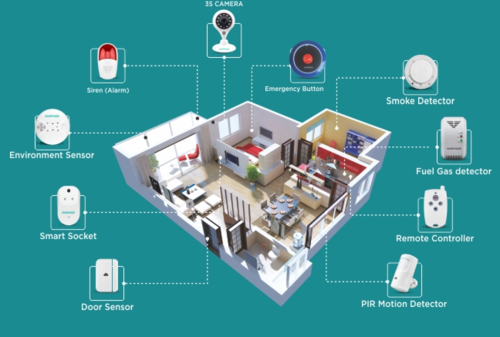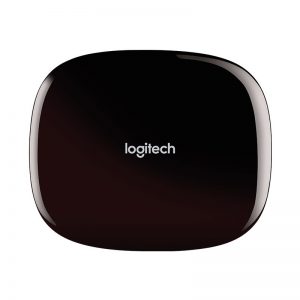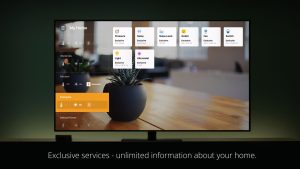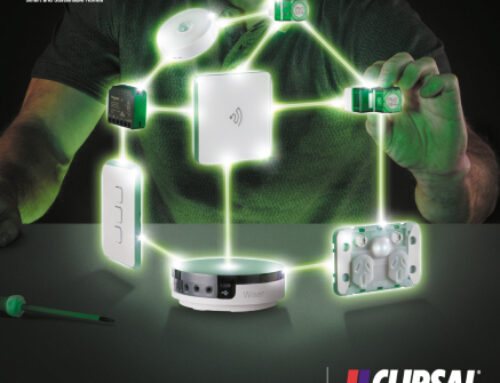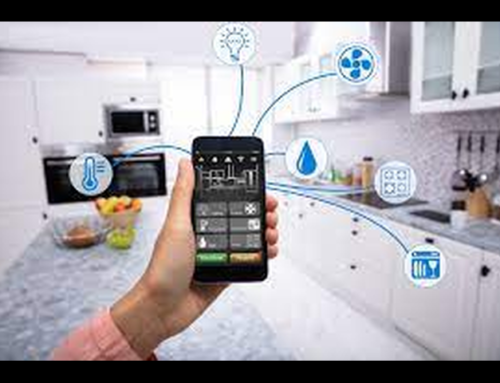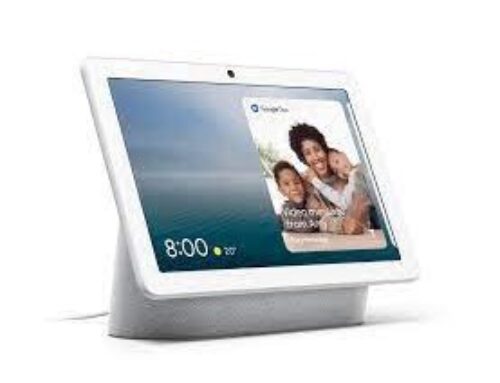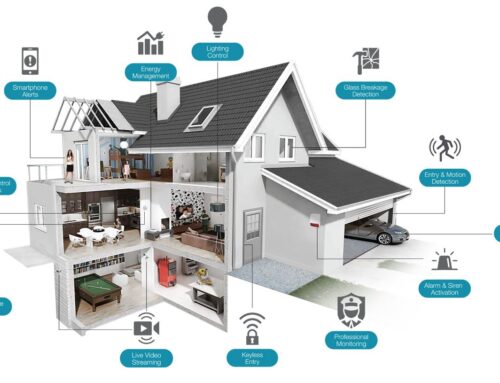Home automation systems are changing the way we interact with our homes.
From controlling our lights, locks, and small appliances to adjusting our thermostat, turning on your sprinklers, and much more.
But as devices proliferate, the need to control them from one central location becomes paramount.
That’s where home automation hubs come into play. 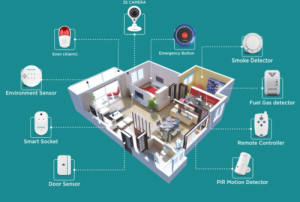
They connect to your devices and allow you to control everything from one central app.
That is exactly what home automation systems/smart hub do.
They ensure that all your connected devices talk to each other, giving you control over your entire home with the push of a button or the sound of your voice.
Now, instead of having different apps for different functions, you can manage everything from one place—your hub.
And the cool thing is that there are a variety of hubs, so you can find exactly what you’re looking for to control your home.
What Is a Home Automation Hub?
Smart hubs are like a brain: they receive and send signals that can adjust your lights, change the temperature, brew your coffee, and much more.
With a smart hub, you can integrate different devices so they work cohesively and create a seamless experience.
Hubs can work with Z-Wave, ZigBee, Bluetooth, and IFTTT protocols, among others, so you can set specific sequence of events.
For example: when I’m on the way home, adjust the temperature.
And this is just the beginning; as devices and third-party integration capabilities continue to evolve, so will the scenarios you can create.
What Can You Automate?
As home automation systems become more intelligent, their capabilities become almost endless.
From controlling lights and locks to small appliances, and security devices.
Not only can you control your home, but you can also set commands that help your devices learn and then automatically react to your schedule.
For example, you can have your thermostat adjust temperature and your lights turn off at a certain time, say when you’re leaving the house in the morning.
Best Home Automation Hubs
Wink Hub 2
The Wink Hub 2 lets you have it all without any of the hard work. 
It’s easy to install and incredibly versatile, supporting Bluetooth LE, Z-Wave, ZigBee, IFTTT, Kidde, and Lutron Clear Connect.
It also works with Alexa, so you can use voice commands to do just about anything.
The Wink Hub 2 app, which is free for Android and iOS, boasts a simple interface with well-organized information, easy-to-follow instructions, and big icons for user-friendly navigation.
It also comes with powerful dual-band Wi-Fi and Ethernet connection.
The only downside with the Wink Hub 2 is the lack of a USB port, limiting the number of devices you can connect.
Logitech Harmony Elite
What really sets the Logitech Harmony Elite apart is how easy it makes using your entertainment system.
You can watch a movie, turn off the lights, and adjust the temperature all from your seat.
Toggling between smart home devices and your entertainment system has never been this simple.
And for functions that don’t work on the remote, you can use the app, available for Android and iOS.
Amazon Echo
The Amazon Echo uses one very powerful tool: Alexa. 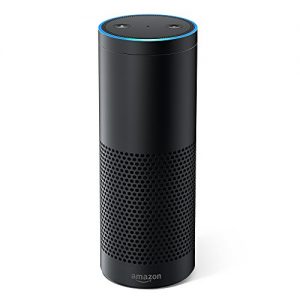
This voice recognition system is not only excellent at picking up your voice, but is always getting better.
Like other automation hubs, the Amazon Echo can help you manage all your smart features and devices, but Alexa’s technology is what really makes it stand out.
The Echo is equipped with seven microphones that use noise cancellation and far-field voice recognition, so Alexa can hear you from just about anywhere.
The Echo doesn’t just make your home smarter—you can also use it to play music, order food, read the news, and much more.
Google Home
Google is part of day-to-day life, and with the Google Home, you’ll have the intelligence of Google’s algorithm at your beck and call.
Google’s voice assistant is smart, quick, and surprisingly funny. 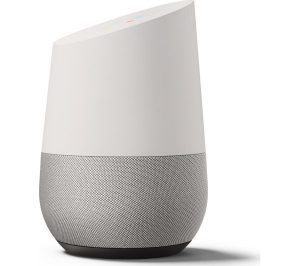
The Home combines home automation functionality with a personal assistant, so you can give voice commands to control everything, including your lights, locks, small appliances, and TV.
Home has multiple user accounts, giving other, more established, home automation hubs on this list some serious competition.
Another cool thing about Google Home is that it gets to know you on a very personal level through your Google searches, Google calendar, and Gmail.
This impersonation makes it easier for it to understand what you mean when you ask a question.
Like its competition the Amazon Echo Dot, the Google Home lets you group speakers to play the same song throughout your entire house.
Perhaps the most surprising part of all is how affordable the Google Home is compared to similar products on the market.
Samsung SmartThings Hub
What it lacks in looks, the Samsung SmartThings Hub makes up in brains. 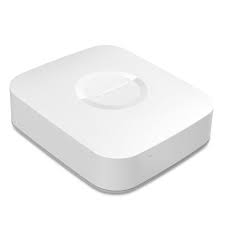
It’s impressively one of the most versatile home automation hubs on the market, and it integrates with just about everything, including ZigBee, Z-Wave, IFTTT technologies, Alexa, and many more devices.
It’s also equipped with USB ports and Bluetooth capabilities.
But what really makes the integration between devices stand out is being able to link them together.
For example, you can have your lights turn on and your thermostat adjust based on your location.
If you have a programming background, you can take a stab at integrating devices that aren’t official partners of Samsung.
In fact, there’s a whole community of people sharing their projects and experiences with integrating devices in different and innovative ways.
Apple Homekit
To keep things simple, you can create scenes, enabling multiple devices to work in combination from a single command.
For example, if you’re going to bed, you can set a scene that will turn off the lights, lock the doors, and adjust your thermostat accordingly.
And, of course, the HomeKit wouldn’t be complete without Siri.
Like Amazon’s Alexa and Google’s Assistant, Siri will answer your questions, follow commands, set reminders, and more.
The one drawback of the Apple HomeKit is an all-familiar one with Apple products—it doesn’t play well with others.
Apple has strict rules such as requiring developers to purchase a license and hardware to have an encryption co-processor.
But for most Apple users, the company’s security measures are something they’re familiar with and have even come to appreciate.
Please CLICK HERE to access many more blog articles for detailed information of buying or getting services to all major home appliances
and CLICK HERE fur more blog articles about Home Automation Systems and appliances.


